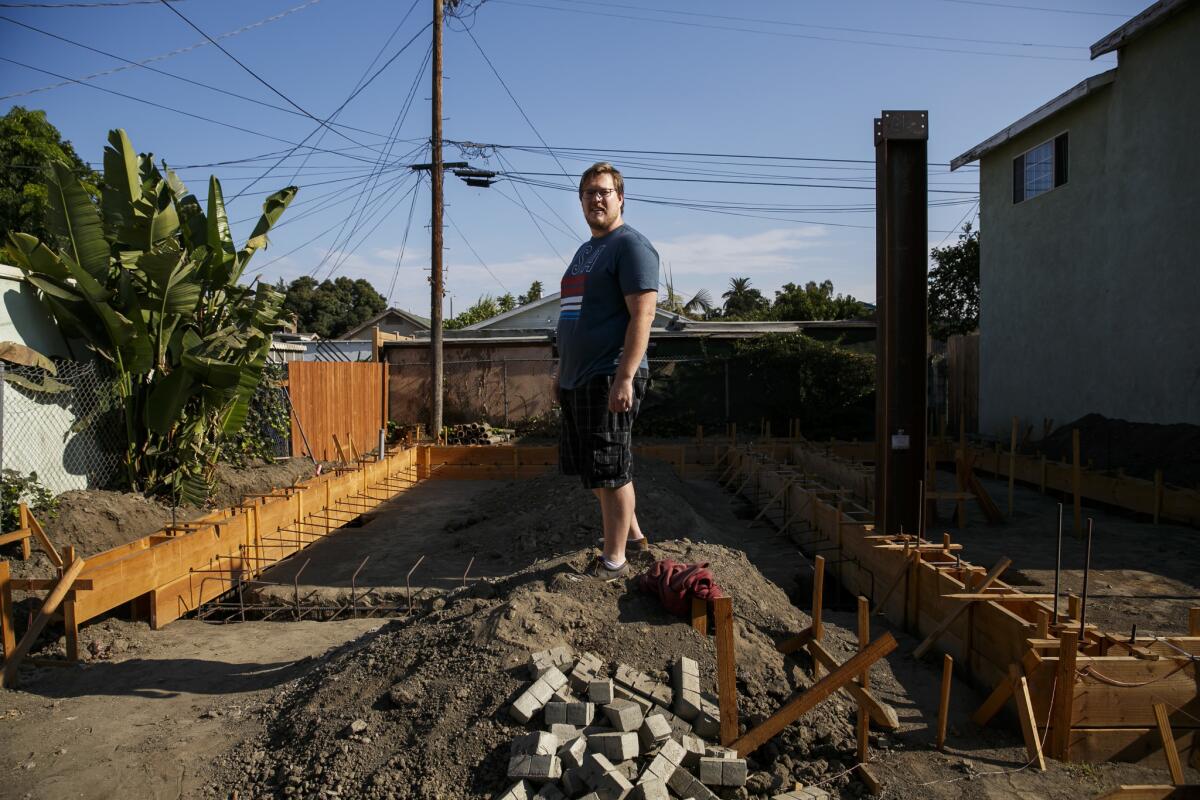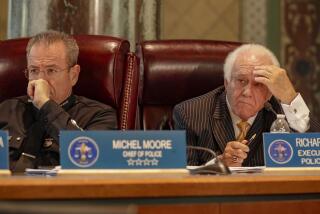L.A. lawmakers plan to grandfather in hundreds of granny flats

Los Angeles lawmakers tentatively voted Wednesday to give city blessing to hundreds of “granny flats” — second units tucked behind houses — that had been thrown into legal limbo after a court ruling this year.
The City Council vote sets the stage to grandfather in second units that were already approved or in the pipeline, as long as owners had submitted their plans to the city. The grandfathering plan will return to lawmakers again next week for approval.
But the council balked at repealing an old set of city rules on such units, which set stricter standards on granny flats than a clashing state law.
Doing so would have allowed Los Angeles to fall back on the looser set of state standards that it had been using for years. Instead, lawmakers asked city planners to hash out a temporary, legally sound set of rules that would effectively reinstate the tighter standards imposed under the old city law.
They also want the planning department to permanently revise its rules on granny flats, taking into account the distinct needs of different neighborhoods. Neighborhood groups argued that L.A. needed stricter rules than the state standards to prevent out-of-scale units from popping up behind local homes.
Allowing bigger units under the state rules would be “a prescription for trouble,” City Councilman Paul Koretz said. “It’s a massive doubling of density in some neighborhoods.”
L.A. will not be able to resume approving any newly proposed granny flats until it comes up with the temporary fix that lawmakers requested, planning officials said. Principal City Planner Ken Bernstein told lawmakers Wednesday that he was unsure how long that might take.
The decision disappointed some advocates who see granny flats as a key way to ease the housing crisis afflicting Los Angeles. “It freezes everyone who hasn’t been in the process,” said Helen Leung, co-executive director of LA-Más, a nonprofit urban design group.
The City Council was forced to reexamine its rules after a court decision halted new permits for granny flats and threw hundreds of existing ones into legal limbo. Years ago, L.A. officials decided to stop applying an old set of city restrictions to granny flats because California had passed a conflicting law that was meant to smooth the way for such units.
But after a legal dispute erupted over a unit in Cheviot Hills, a court ruled that L.A. had improperly disregarded the city law that was still on the books. The ruling invalidated a memo that city officials had relied upon, which allowed granny flats that were in line with state rules and city zoning.
That meant that the city could no longer hand out permits using that memo. City officials also said the court decision cast doubt on hundreds of units that had already been approved under those rules.
More than 200 units had gotten building permits but were unable to move forward and get city certificates that allow them to be legally occupied. Seyed Zadeh, a quadriplegic engineer living in West L.A., pleaded with lawmakers Wednesday to grandfather in a unit built for his caregiver.
“Please save me from this misery that I’m in right now,” Zadeh urged the council.
To iron out the legal mess, the city planning department had recommended that L.A. simply roll back its city ordinance, allowing it to legally rely on the state standards. Granny flat proponents urged them to do so, arguing that L.A. needed to ease the way for more such housing.
But neighborhood groups contended that the California rules were too lax. For instance, the state rules would allow granny flats to be much bigger – up to 1,200 square feet – than the old city restrictions that set a limit of 640 square feet. Critics also pointed out that while the state law bars cities from requiring a discretionary process to decide which granny flats are allowed — which the old L.A. ordinance did — it still allows cities to impose some local restrictions on their size and placement.
Relying on the looser state standards would result in a big jump in neighborhood density, worsening noise and congestion, argued Xochitl Gonzalez, a Sawtelle homeowner. She complained that multistory units in her area had eroded privacy for their neighbors.
For people who have scrimped to buy a home, “it’s a big middle finger to us,” Gonzalez said.
Robin Greenberg, president of the Bel Air-Beverly Crest Neighborhood Council, said turning to the state standards would be a “one-size-fits-all approach” that fails to meet the needs of different neighborhoods, particularly hillside areas.
Granny flat proponents have countered that city rules would still limit the total square footage that could be built on any lot. Many noted that second units remain rare, with an average of about 60 approved annually in recent years.
Ira Belgrade, who lives near Hancock Park, said the worries about state standards ushering in a glut of oversized units were “ridiculous.”
The state standards “have been the de facto law in the city of Los Angeles for the past six years,” said Belgrade, who has a second unit behind his home. “It has worked. Now all of a sudden, people are like, ‘State law? We can’t have that!’ ”
City lawmakers said they wanted the temporary fix to strip out the parts of the old municipal ordinance that violated state law, but maintain its tighter restrictions on building size.
“I believe this is a great compromise,” Councilman David Ryu said.
Follow me on Twitter at @LATimesEmily
More to Read
Sign up for Essential California
The most important California stories and recommendations in your inbox every morning.
You may occasionally receive promotional content from the Los Angeles Times.











